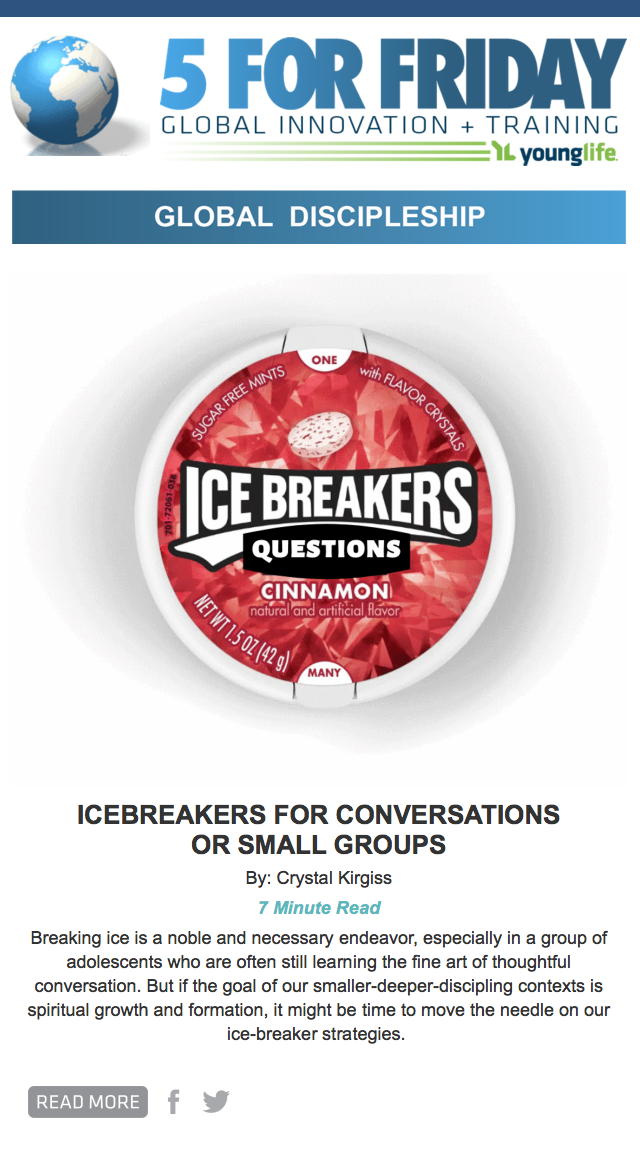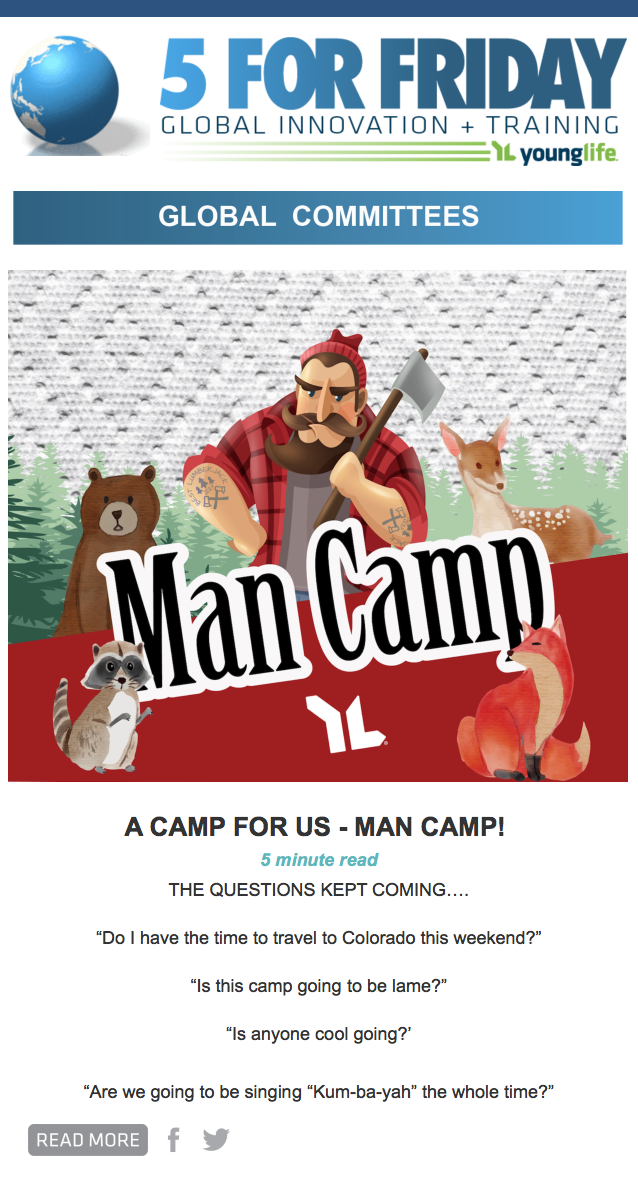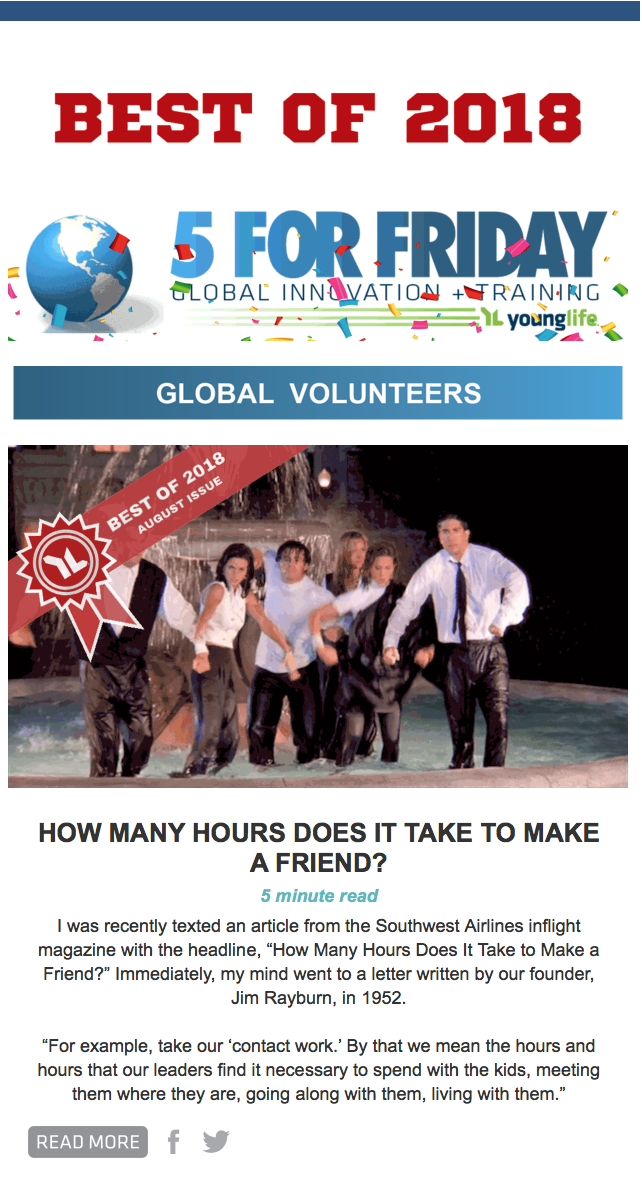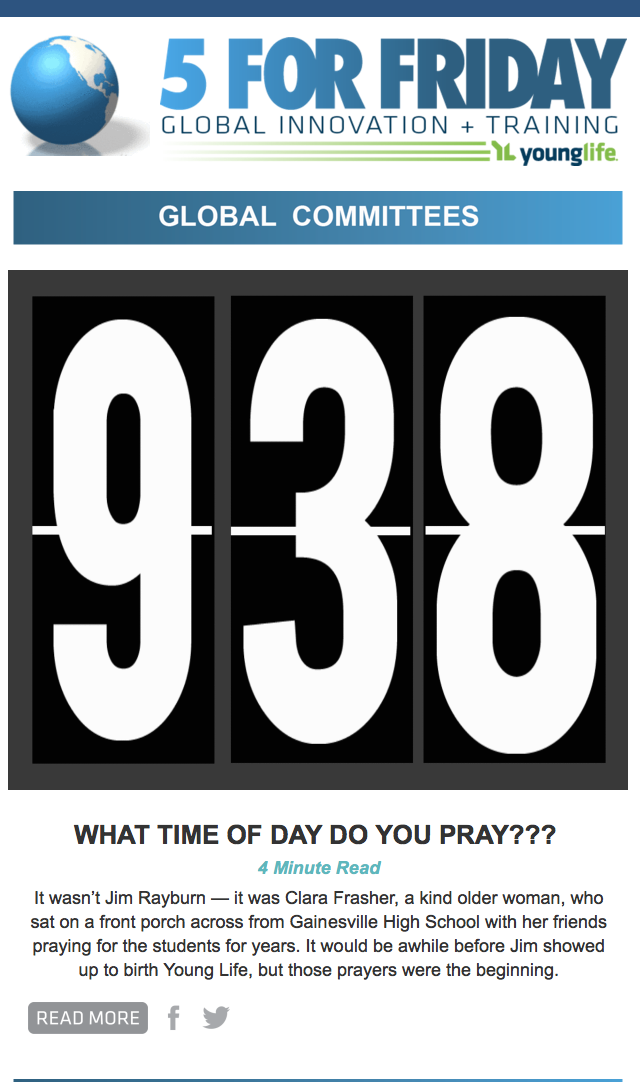“Ask the Lord of the harvest, therefore, to send out workers into his harvest field.” (Matthew 9:38)
"I do not pray for these alone, but also for those who will believe in Me through their words; that they may all be one, as You, Father, are in Me, and I in you; that they also may be one in Us, that the world may believe that You sent Me" (John 17:20, 21)
Lists. We use them all the time. Every time I go to Costco I have a hand-scribed list from Marni. I see others just like me in the grocery store… lists on paper, lists on phones, and calling in for a verbal list. Everyone in the famous movie that was on Schindler’s “list” actually lived. It was a powerful list.
More than fifteen years ago, I challenged a campaigner group to pray for ten of their unsaved friends. A mom called me and asked if I could come by while her son was in school. I came by and she marched me into her son’s bathroom and there on the mirror was a scrappy piece of paper list of ten kids names. “What is this?” I told her that these were the kids her son was praying for… all were in 9th grade. Today, everyone on that list knows Jesus and 4 of them are on Young Life staff.
We list out projects. We list out prayers. We list out who can come to a gathering. We have wedding lists. We have Christmas card lists. We are list people… and today, I want to challenge you to consider a new type of a list. The “Discipleship List.”
The Discipleship List was an assignment that really stuck with me when I went through the official “Young Life Practicum I and II” sometime in the late 80’s. This list has two parts. First, who are the kids that you are discipling? Second, what are you wanting them to learn, experience, and do while they are under your tutelage?
It starts with YOU knowing the kids that you are discipling. (Discipling means teaching them to follow Jesus with their life, to love the word, prayer, to have fellowship, to be obedient, and to strive to follow the great commission.) The famous quote, “If you fail to plan, you plan to fail.” You want to have a plan for who you are discipling.
Again, it starts with a list. Who has the Lord laid on your heart to “pour into.” We call it so many things in Young Life. There are phrases you might use that I don’t: my campaigners, small group, discipleship group, student leadership team, green beret campaigners, student leaders, etc. I would say it is as simple as a list. Who are the kids that you are going to give it all to? You are pouring your life into them – you are available to them always, and your life is an open book. They know they are on your list, and you know they are on the list.
I remember going to a restaurant that was owned by long-time Young Life supporter Bob Farrell. Sometimes when you went to his Stanford’s restaurant you would see a person following the waiter or waitress around the restaurant. They literally just followed. At times, it even felt a little awkward. Well, it was actually a beautiful thing. They were “in training.” Bob wanted them to see it all, the full scope of what it meant to take care of multiple tables, crunch time, mistake orders, etc. Who is following you around? What are you wanting to make sure they see?
My first year of Young Life training my trainer Jeff said, “What do you want to make sure your sophomore followers of Christ leave with in two-years?” Oh my, did this open up my mind of the possibilities! I wanted them to know so, so much. You could, and should, make some notes right now, on what you want your kids leaving within 6 months, in a year, in 2, or even 3 years. (If you have a Wyldlife and a College ministry – you could have a 6-year plan.) What do you want to make sure they know about Jesus? About the Holy Spirit? About the Word? About scripture? About lifestyle evangelism? About service? About how to “do Young Life?”
In Young Life, at least in this 5 for Friday, I would hope people would make a “list.” Who is in your life? What list do you want to make sure they end up learning, experiencing, and doing?
Here is a sample list to get your mind going – would love to have others add to this list by sending me an email: escofield@sc.younglife.org
My brainstorming of what a list could look like of what to impart:
Have an accountability relationship/partner
Treat your body with respect – temple of the Spirit
Be able to write down 50-75 high school/junior high students by name from memory
Develop a plan for your disciples
Practice Spiritual Disciplines:
Reading
Memorizing
Church
Prayer
Journaling
Solitude
Sabbath
Be a “come with person” – bring people with you to club, church, run errands
Memorize TMS
Lead a Campaigner Group
Give your testimony
Go on Work Crew (Summer)
Go on Work Crew (Weekend)
Do a service project
Have a quiet time for 30 straight days.
Do the Thread Journal — and give one away
Have a list of 10 non-believing friends
Be a student leader for Monday Club
Speak well of others
Written by Eric Scofield (escofield@sc.younglife.org)


























































